This article has an unclear citation style .(December 2022) |
Morris Topchevsky | |
|---|---|
| Born | 1899 |
| Died | 1947 |
| Nationality | American |
| Movement | Social realism |


Morris Topchevsky (1899-1947) was a Chicago-based social realist artist. [1]
This article has an unclear citation style .(December 2022) |
Morris Topchevsky | |
|---|---|
| Born | 1899 |
| Died | 1947 |
| Nationality | American |
| Movement | Social realism |


Morris Topchevsky (1899-1947) was a Chicago-based social realist artist. [1]
Morris Topchevsky was born in Białystok, Poland (then a part of Russia) and immigrated to Chicago, Illinois with his family in 1910 to escape anti-Jewish violence. He worked both as a printmaker and a painter using oils and watercolor, and initially started his career as a sign painter. He studied art at the Hull House Settlement, and later at the School of the Art Institute of Chicago. In 1924, he traveled to Mexico City where he met influential Mexican artists like Diego Rivera. [2]
Upon his return to Chicago, he became an instructor at Hull House, the Abraham Lincoln School for Social Science, and the South Side Community Art Center. In the 1930s he worked as part of the WPA’s Federal Art Project in Illinois. Topchevsky served as an early mentor to Chicago artist Charles White. [3] His younger brother, Alex Topchevsky (Topp), was also an artist.
His work was exhibited widely throughout his lifetime including at: The Art Institute of Chicago, the John Reed Club of Chicago, the Pennsylvania Academy of the Fine Arts, the Renaissance Society of the University of Chicago and the Witte Museum in San Antonio, Texas.

Visual art of the United States or American art is visual art made in the United States or by U.S. artists. Before colonization, there were many flourishing traditions of Native American art, and where the Spanish colonized Spanish Colonial architecture and the accompanying styles in other media were quickly in place. Early colonial art on the East Coast initially relied on artists from Europe, with John White the earliest example. In the late 18th and early 19th centuries, artists primarily painted portraits, and some landscapes in a style based mainly on English painting. Furniture-makers imitating English styles and similar craftsmen were also established in the major cities, but in the English colonies, locally made pottery remained resolutely utilitarian until the 19th century, with fancy products imported.

Lorado Zadok Taft was an American sculptor, writer and educator. Part of the American Renaissance movement, his monumental pieces include, Fountain of Time, Spirit of the Great Lakes, and The Eternal Indian. His 1903 book, The History of American Sculpture, was the first survey of the subject and stood for decades as the standard reference. He has been credited with helping to advance the status of women as sculptors.
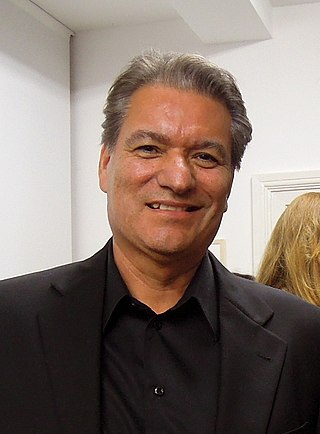
Dan Namingha is a Hopi painter and sculptor. He is Dextra Quotskuyva's son, and a great-great-grandson of Nampeyo. He is a member of the Hopi-Tewa member of the Hopi Tribe. He lives in Santa Fe, New Mexico.
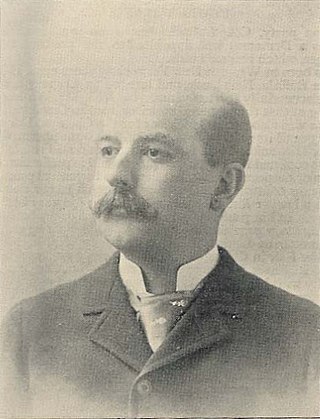
Edward Burgess Butler was an American businessman who founded Butler Brothers department stores. He served as the first president of the Pasadena Society of Artists.

Charles Wilbert White, Jr. was an American artist known for his chronicling of African American related subjects in paintings, drawings, lithographs, and murals. White's lifelong commitment to chronicling the triumphs and struggles of his community in representational from, cemented him as one of the most well-known artists in African American art history. Following his death in 1979, White's work has been included in the permanent collections of the Art Institute of Chicago, Los Angeles County Museum of Art, The Metropolitan Museum of Art, the Whitney Museum of American Art, the National Gallery of Art, The Newark Museum, and the Santa Barbara Museum of Art. White's best known work is The Contribution of the Negro to American Democracy, a mural at Hampton University. In 2018, the centenary year of his birth, the first major retrospective exhibition of his work was organized by the Art Institute of Chicago and the Museum of Modern Art.
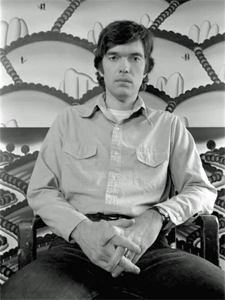
Roger Brown was an American artist and painter. Often associated with the Chicago Imagist groups, he was internationally known for his distinctive painting style and shrewd social commentaries on politics, religion, and art.

Archibald John Motley, Jr., was an American visual artist. Motley is most famous for his colorful chronicling of the African-American experience in Chicago during the 1920s and 1930s, and is considered one of the major contributors to the Harlem Renaissance, or the New Negro Movement, a time in which African-American art reached new heights not just in New York but across America—its local expression is referred to as the Chicago Black Renaissance. He studied painting at the School of the Art Institute of Chicago during the 1910s, graduating in 1918.
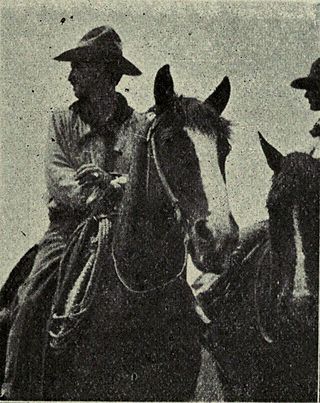
William Penhallow Henderson was an American painter, architect, and furniture designer.
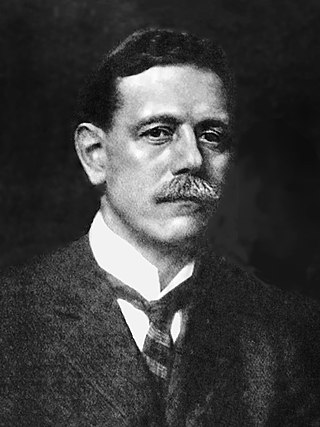
Irving Kane Pond was an American architect, college athlete, and author. Born in Ann Arbor, Michigan, Pond attended the University of Michigan and received a degree in civil engineering in 1879. He was a member of the first University of Michigan football team and scored the first touchdown in the school's history in May 1879.
Robert Amft was a painter, sculptor, photographer, designer born in Chicago.

The Chicago Black Renaissance was a creative movement that blossomed out of the Chicago Black Belt on the city's South Side and spanned the 1930s and 1940s before a transformation in art and culture took place in the mid-1950s through the turn of the century. The movement included such famous African-American writers as Richard Wright, Margaret Walker, Gwendolyn Brooks, Arna Bontemps, and Lorraine Hansberry, as well as musicians Thomas A. Dorsey, Louis Armstrong, Earl Hines and Mahalia Jackson and artists William Edouard Scott, Elizabeth Catlett, Katherine Dunham, Charles Wilbert White, Margaret Burroughs, Charles C. Dawson, Archibald John Motley, Jr., Walter Sanford, and Eldzier Cortor. During the Great Migration, which brought tens of thousands of African-Americans to Chicago's South Side, African-American writers, artists, and community leaders began promoting racial pride and a new black consciousness, similar to that of the Harlem Renaissance. Unlike the Harlem Renaissance, the Chicago Black Renaissance did not receive the same amount of publicity on a national scale. Among the reasons for this are that the Chicago group participants presented no singularly prominent "face", wealthy patrons were less involved, and New York City—home of Harlem—was the higher profile national publishing center.

Enella Benedict was an American realism and landscape painter. She taught at the School of the Art Institute of Chicago and was a founder and director for nearly 50 years for the Art School at the Hull House.
Theodore Gilbert Haupt (1902–1990), was an American Modernist painter, sculptor and muralist who melded Cubist with Surrealist elements. As a graphic designer, he achieved recognition for his New Yorker magazine covers.

Walter Sanford, also known as Sanford,, was an American artist who worked in a range of styles and influences using traditional media such as paint, ink, crayon and pencil. His artworks include collages, cartoons, pencil drawings, linoleum-cuts, woodcuts, sculptures, paintings, and portraits. He was one of the first and only black social realism and abstract expressionist artists of the 20th century. He was heralded "Black Picasso" and "Detroit's Picasso" for his cubist figure paintings and in 1958 he won the Prix de Paris La Grande Saison de Paris at the Raymond Duncan Galleries. In Detroit, he opened the first black-owned art gallery and exhibited at the first Negro Art Exhibition and Negro History Week and was hailed as one of Michigan's foremost modern art painters in 1952.

John Walter Stephan (1906–1995) was an American painter in the Hard-edge style. His magazine The Tigers Eye was widely read and is considered a lastingly influential magazine of art and literature. He was a contemporary and friends with such notable artists as Mark Rothko, Clyfford Still and William Baziotes
Walter Ellison (1899–1977) was an African American artist, born in the state of Georgia.

Rodney Carswell is an American abstract artist. He first gained recognition for human-scaled, geometric paintings that feature exposed, projected support structures, creating interplay between sculptural presence and richly painted pictorial surfaces. His recent paintings eschew the superstructures and evoke a greater sense of immediacy, playfulness, and narrative. Critics often describe Carswell's work as uncanny, elusive or quirky, for its tendency to negotiate "in-between" spaces and embrace contradictions such as order and instability, intention and accident, or back and front. Employing irregularly shaped canvasses, thick supports, and openings or holes that reveal the stretcher construction and walls behind them, works like 3 (1994) often occupy a place between painting and sculpture. In a similar way, Carswell uses the modernist languages of Minimalism, Suprematism and Constructivism, yet eludes those categories with postmodern allusions to architecture, the body and spiritual iconography, and with his process-oriented, "hand-made" surfaces. In his essay for Carswell's mid-career retrospective at Chicago's Renaissance Society, Los Angeles Times critic David Pagel suggested that his understated paintings worked their way into one's consciousness in a "supple, somewhat unsettling manner" that achieves a subtle, but lingering shift in perception.
Sam Himmelfarb was a Russian Empire-born, American artist and commercial exhibit designer, known for his modernist-influenced paintings of everyday people and urban scenes. He also designed the Frank Lloyd Wright-inspired Samuel and Eleanor Himmelfarb Home and Studio in Winfield, Illinois, which is listed on the National Register of Historic Places. Himmelfarb studied art at the Art Students League and National Academy of Design in New York and at the Wisconsin School of Fine and Applied Arts. He initially painted in a realist style influenced by the Ashcan School, which gave way to more modernist, increasingly abstract styles. His paintings appeared in exhibitions at the Art Institute of Chicago (AIC), Terra Museum of American Art, Milwaukee Art Institute, and Arts Club of Chicago, and in circulating shows from the American Federation of Arts, among other venues. He received awards from the AIC, Wisconsin State Fair and Milwaukee Art Museum, and his work belongs to the collection of the latter, and those of the Illinois State Museum, Block Museum, and Arkansas Art Center, among others. Himmelfarb was married to the artist and educator, Eleanor Himmelfarb (1910-2009); their son, John Himmelfarb, and grandchild, Serena Aurora Day Himmelfarb, are also artists.
Emil Armin was an American artist known for his use of vibrant color and brushwork. From the 1920s through his death in 1971, Armin maintained a high profile in Chicago's artistic community.
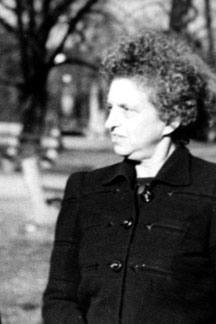
Dorothy Loeb (1877–1971) was an American artist known for her easel art, prints, and murals. She traveled widely in the United States, Mexico, and overseas, residing and working for the most part in Chicago, Manhattan, Eastern Massachusetts, and the State of Querétaro in Mexico. She was also a children's art teacher and proponent of progressive education. Having received training at the Art Institute of Chicago and the Art Students League of New York and having studied with artists in Munich and Paris, she adopted a variety of styles, ranging from representative to highly abstract, and worked in a variety of media including oil on canvas, oil on heavy coated paper, watercolor and ink on paper, and monotype printing. She exhibited in prominent museums including the Art Institute of Chicago, Provincetown Art Association and Museum, Worcester Art Museum, Wadsworth Atheneum, and Institute of Contemporary Art, Boston. She also showed a mural at the 1933 Chicago World's Fair. Most critics responded favorably to her work but not all. At one extreme, a reviewer called her work "the very best in the new art movement" while at the other, a critic said it was "dull, stiff, and lifeless".